JONG OH is an artist known for his exploration of minimal and
site-specific sculpture and installation, often working with given materials
and limited space. Working within designated areas with clearly defined
boundaries might appear as a limitation or challenge to some, but for him, it
serves as a wellspring of inspiration for fresh perspectives. Although his
artworks aptly achieve a remarkable harmony with their respective spaces,
giving off an impression of precision and meticulousness, his creative process
thrives on spontaneous intuitions and an immediate, reciprocal engagement with
the site itself. Based in Seoul and New York, his works have been shown in various institutions including Art Sonje Center, Seoul (2023); Choi Man Lin Museum, Seoul (2023); Doosan Gallery, New York & Seoul (2021); Song Eun Art Space, Seoul (2020); ZKM Center for Art and Media, Karlsruhe (2019); and Seoul Museum of Art, Seoul (2018). He has been honored with the Excellence Prize at the 20th Song Eun Art Award.
How has life been treating you since your recent two-person exhibit, A Place Between Rhythm and Rhythm at the Choi Man Lin Museum?
It's been quite busy on my end, with multiple shows set to open in September, but overall, things are going well. Given that my work often requires me to be on-site, I find myself in situations where I need to envision the space I'll be working in since it can vary greatly.
![Jong Oh, Room drawing (light) #1, 2023. LED light, electric wire, rope wire. Dimensions variable. Courtesy of Choi Man Lin Museum]()
![Jong Oh, Room drawing (light) #1, 2023. LED light, electric wire, rope wire. Dimensions variable. Courtesy of Choi Man Lin Museum]()
Considering your work's nomadic nature, where you prefer to roam and explore, has the COVID-19 pandemic had any impact on your artistic process and lifestyle?
There was a certain period when the pandemic heavily influenced my work and lifestyle. Prior to the pandemic, as you mentioned, I would frequently move around without a fixed residence or studio. However, due to COVID-19, I made an unexpected decision to establish a permanent home and studio in Korea. This shift was motivated by a growing sense of the need to anchor myself both physically and mentally after years of constant travel.
Interestingly, this decision to settle in one place provided me with a fresh perspective and the opportunity to revisit some of my earlier works that I had temporarily set aside, such as my small watercolor pieces and the Folding Drawing series. In hindsight, even though none of this was part of my original plan, it has all ultimately worked in my favor.
![Jong Oh, Folding Drawing #55, 2022. Wood panel, paint, metal rod, chain. 38 x 15.2 x 11.2 cm (15 x 6 x 4.4 in). Courtesy of the artist]()
![Jong Oh, Light of Seoul #8, 2023. Watercolor and graphite on paper. 33 × 24 cm (13 x 9.5 in). Courtesy of the artist]()
![Jong Oh, Light of Seoul #6, 2023. Watercolor and graphite on paper. 33 × 24 cm (13 x 9.5 in). Courtesy of the artist]()
![Jong Oh, Light of Andratx #6, 2019. Watercolor and graphite on paper. 30 × 23 cm (11.8 x 9 in). Courtesy of the artist]()
You were born in Mauritania, located in Northwest Africa, and spent most of your childhood in Spain. Did this constant movement between countries with diverse cultures ever make you feel a lack of belonging?
I became accustomed to frequent relocation during my upbringing. Surprisingly, the absence of a strong attachment to any specific place actually provided me with a sense of freedom and comfort. In my earlier years as an artist, I believed that my multicultural background had no bearing on my creative process or the type of work I produced. I resisted connecting the dots between my upbringing and my art, as I felt it might hinder the interpretation of my work. However, in recent times, I've come to recognize a deeper correlation than I initially thought. For instance, many of my site-specific works are created spontaneously on-site and later dismantled once the exhibition concludes. When I look back, these processes mirror the moments and emotions I experienced during my childhood when I had to repeatedly leave behind newly formed friendships and a sense of comfort. The concept of being firmly rooted in one place didn't come naturally to me. While I don't consciously dwell on these memories when I work, I do believe they may have subtly influenced my artistic approach.
You've explored a variety of series that utilize space in different ways, ranging from Room Drawing to Line Sculpture. What are the key considerations that guide you when you embark on an installation in a room?
It might sound a bit abstract (chuckles), but I essentially engage in a dialogue with the space. By approaching a particular space with an open and receptive mindset and spending ample time immersed in it, it's as if I can hear responses to my questions. Maintaining harmony with the space is paramount. The majority of my works are executed with as minimal advance planning as possible.
![Jong Oh, Line Sculpture #4, 2013. Wood, paint, string, plexiglass. 140 x 112 x 60 cm (55 x 44 x 23.5 in). Courtesy of the artist]()
![Jong Oh, Wall Drawing #1, 2015. String, metal rod, pencil line, paint, bead. 240 x 240 x 32 cm (94 x 94 x 12.4 in). Courtesy of the artist]()
![(detail)]()
![(detail)]()
![Jong Oh, Reposition, Translocation, 2012. String, weight, plastic sheet, wood, paint, nail, graphite, C-print, Dimensions variable. Courtesy of the artist]()
![(detail)]()
![(detail)]()
I'm curious to learn more about specific works, especially Room Drawing (Found Objects #1) from 2018. This installation seems to incorporate a larger number of found objects compared to other works in the series. Could you share more about their origins?
This installation was created in Japan in 2018 for an exhibition that was open for only ten days, with just one day allocated for the installation itself. Given the nature of my work, which typically demands more time on-site, I was faced with a dilemma. After giving it a thought, I decided to integrate those ten days of the exhibition into the artwork. Starting from the opening day, I began adding found objects to the installation, objects I had picked up each morning on my way to the gallery. It felt as if I were crafting a narrative over the course of the exhibition. The work evolved and displayed different characteristics each day, and the process itself became an integral part of the artwork, visible to visitors as they saw me working on it. It was a fascinating experience to witness the gradual accumulation of objects I collected daily, each contributing to its own evolving story.
![Jong Oh, Room Drawing (found objects) #1, 2018. Tree branch, lock, umbrella parts, spring, rock, chain, flower, wire, earring, sea shell, marble, etc. Dimensions variable. Courtesy of Spiral Wacoal Art Center. Photo by Junpei Kato]()
![(detail)]()
![(detail)]()
![(detail)]()
One intriguing aspect of the Found Gestures series is the recurring motif of chairs. Unlike other series that often feature abstract or geometric patterns, the Chair series appears to be one of the few in your body of work inspired by a specific object. Do you find yourself more inclined to explore and utilize various materials and colors, or are you more interested in deriving new outcomes using the same materials?
The Chair series, to begin with, was a project I initiated while I was in Japan. It marked one of the early instances where I started incorporating found objects into my work. On the street I frequently walked during my time in Japan, there was always a substantial heap of discarded chairs. I would salvage some of these chairs almost daily, and that's how they found their way into my process. The bright green paint used in Pyramid—another work included in the series— was initially given to me by a friend during my undergrad, and the same applies to the stones, wood, and makeup brush featured in other works within the series. People I knew would casually provide me with these items, amassing them in front of my studio because they understood my working approach.
I relish the problem-solving aspect of my work, in a sense. I enjoy assessing the materials I have at hand in a given situation, constructing a framework from them, and then discovering what new creations can emerge within those constraints. It's similar to how we navigate our lives with limited freedom. Creating a site-specific work within a designated space, when you think about it, imposes constraints and boundaries that cannot be altered. I derive satisfaction from gradually resolving these challenges on my own, which is fundamentally how I approach my art. Returning to the Chair series, it was a deliberate effort to explore the potential of generating something new from limited options and materials.
This concept of limitation ties into the essence of sculpture as an artistic genre. To me, sculpture represents an unadulterated, honest medium, physically present without any optical illusions. Regardless of the specific material—whether it's wood or stone—there's always the need to grapple with gravity and weight, inherent conditions that demand a unique approach.
![Jong Oh, Untitled 3(chair series), 2011. Wooden chair parts, paint. 41 x 34 x 28 cm (16 x 13.5 x 11 in). Courtesy of the artist]()
![Jong Oh, Untitled 2(chair series), 2011. Wooden chair part, string, shadow. 102 x 71 x 48cm (40 x 28 x 19 in). Courtesy of the artist]()
Geometric patterns are a recurring theme in your works. However, these patterns seem to bear the unmistakable mark of the artist's hand, such as the shaping of the grid or the curvature of the wire. Despite the fact that the majority of your work blends geometric forms with found objects, it doesn't convey an artificial or overly literal impression often associated with minimalist sculptures. To me, it possesses a more poetic quality.
That is correct; I do make a deliberate effort to leave my work with a hint of a personal touch. While working with geometric shapes can sometimes result in a sense of cold, calculated precision, I have long aspired to imbue geometric art with warmth. For instance, even when I have the option to use black string, I intentionally begin with white thread and apply charcoal or dark paint to the surface by hand. Although it may be a subtle touch, it's my way of introducing a sense of warmth. I strive to avoid the overly weighty or literal style often associated with minimalism, preferring to maintain a sense of lightness and playfulness in my creative process.
In Treeangle (2012), you took your work out of the traditional white cube gallery and into the public space of nature. I'm curious to learn about the inspiration behind using trees as your primary material and how working in a public setting differs from working within an enclosed space.
I had the opportunity to work on Governors Island, located near Manhattan, just a 15-minute ferry ride away. Back when I was in New York, the island was quite undeveloped, with abandoned houses dotting its landscape. I was part of a residency program that allowed artists to utilize the island for their artistic projects. Treeangle marked my first venture into creating official public art, taking my work beyond the confines of the white cube gallery and into the open embrace of nature.
Much like my approach to working with objects, I was eager to explore the possibilities presented by the natural environment and the presence of trees. I was intrigued by the strength and flexibility of trees, as well as their ability to securely hold strings taut from both ends. Certainly, working in a public space posed more constraints compared to the controlled environment of a gallery such as concerns about the safety of viewers and the potential impact on the natural surroundings.
However, in the end, I found that the creative process itself mirrored my previous work in many ways. It all revolved around making the most of what we had at our disposal, navigating the possibilities, and solving the challenges that arose along the way.
![Jong Oh, Treeangle 4, 2012. String, tree. 216 x 356 x 152 cm (85 x 140 x 60 in). Courtesy of the artist]()
![Jong Oh, Centered, 2009. Wood, rock, string, nail. 76 x 350 x 40.5 cm (30 x 138 x 16 in). Courtesy of the artist]()
![Jong Oh, Tugged, 2009. String, bicycle wheel, rock, metal wire piece. 61 x 152 x 5 cm (24 x 60 x 2 in). Courtesy of the artist]()
Could you provide a brief overview of your new group show, off-site, which is set to open at Art Sonje Center in Seoul?
off-site is a group exhibition that explores unconventional museum spaces beyond the main exhibition hall, utilizing areas like stairways, backstage, rooftops, and operational rooms. My work involves creating artwork along the stairways, spanning from the base floor to the ground floor. This space possesses a unique atmosphere, with various pre-existing structures and a glass wall allowing direct views of the outdoor surroundings. Given these characteristics, I aimed to create an installation involving light, similar to my approach in A Place Between Rhythm and Rhythm, fostering an organic interplay between the interior and the exterior. Depending on one's perspective and entry point, the artwork can either merge with or diffuse into the outdoor scenery reflected through the window.
off-site is on view through Oct 8, 2023, at Art Sonje Center, Seoul. You can check out more information on: https://artsonje.org/en/exhibition/off-site/
How has life been treating you since your recent two-person exhibit, A Place Between Rhythm and Rhythm at the Choi Man Lin Museum?
It's been quite busy on my end, with multiple shows set to open in September, but overall, things are going well. Given that my work often requires me to be on-site, I find myself in situations where I need to envision the space I'll be working in since it can vary greatly.
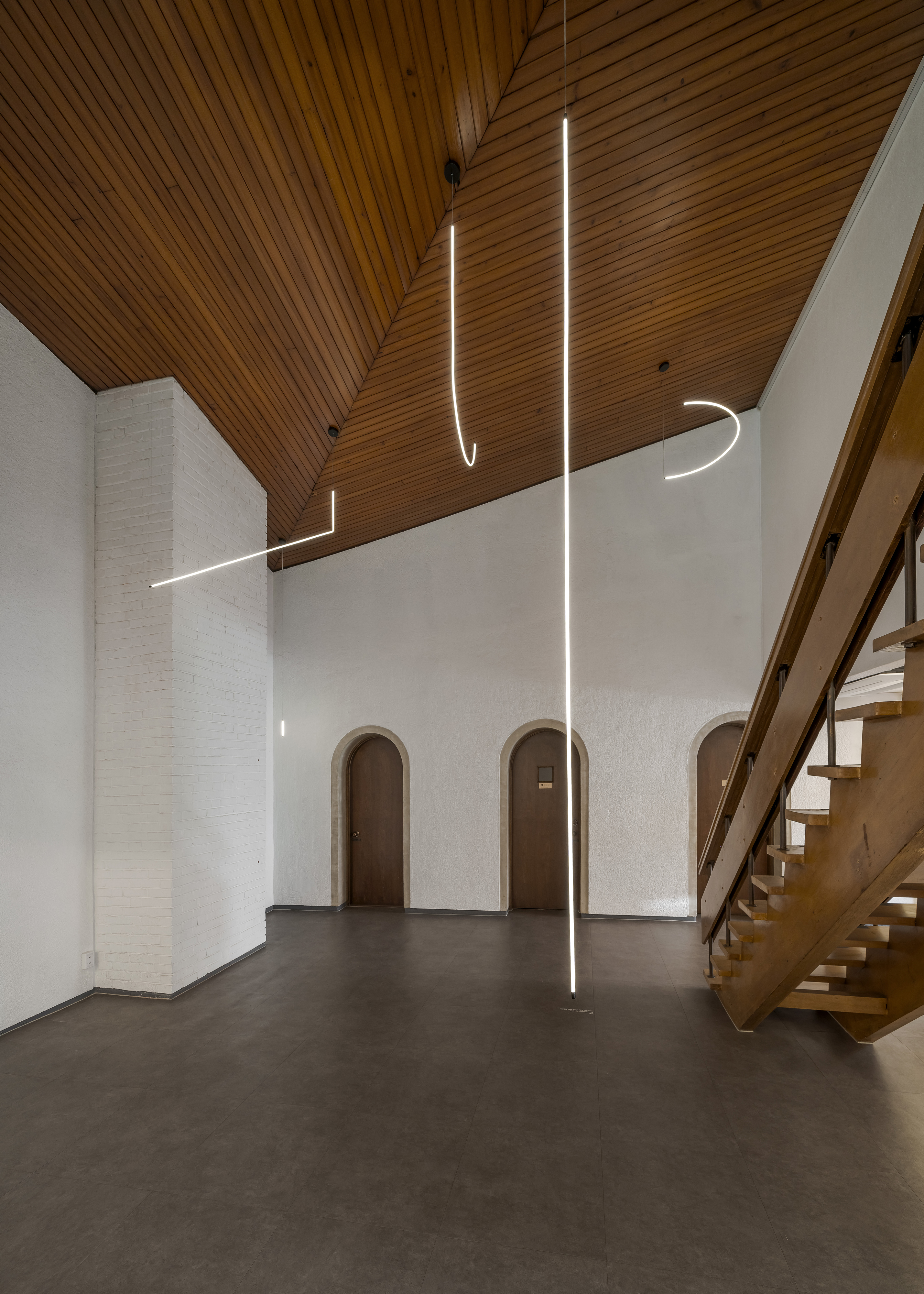
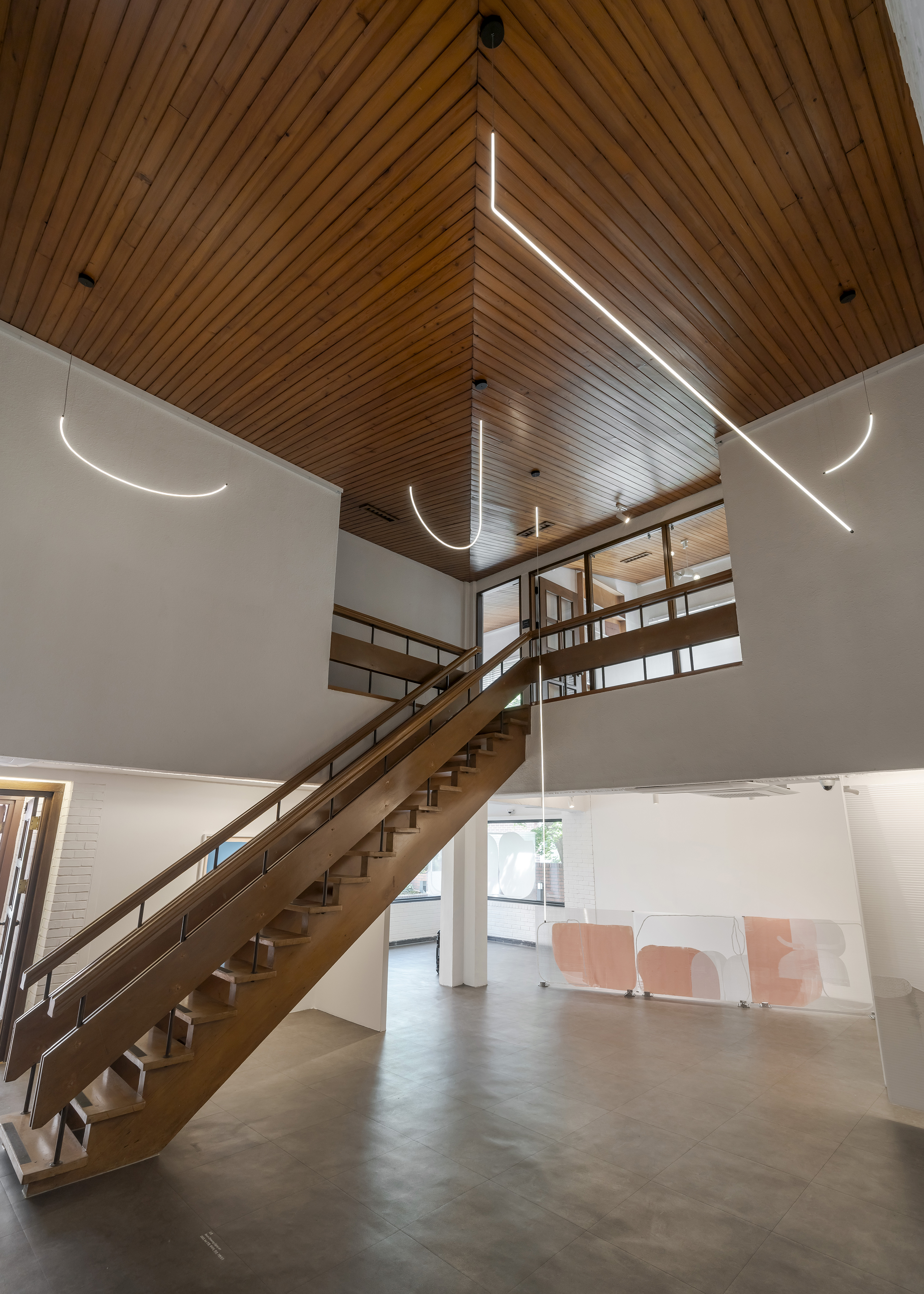
Swipe to see more images
Considering your work's nomadic nature, where you prefer to roam and explore, has the COVID-19 pandemic had any impact on your artistic process and lifestyle?
There was a certain period when the pandemic heavily influenced my work and lifestyle. Prior to the pandemic, as you mentioned, I would frequently move around without a fixed residence or studio. However, due to COVID-19, I made an unexpected decision to establish a permanent home and studio in Korea. This shift was motivated by a growing sense of the need to anchor myself both physically and mentally after years of constant travel.
Interestingly, this decision to settle in one place provided me with a fresh perspective and the opportunity to revisit some of my earlier works that I had temporarily set aside, such as my small watercolor pieces and the Folding Drawing series. In hindsight, even though none of this was part of my original plan, it has all ultimately worked in my favor.

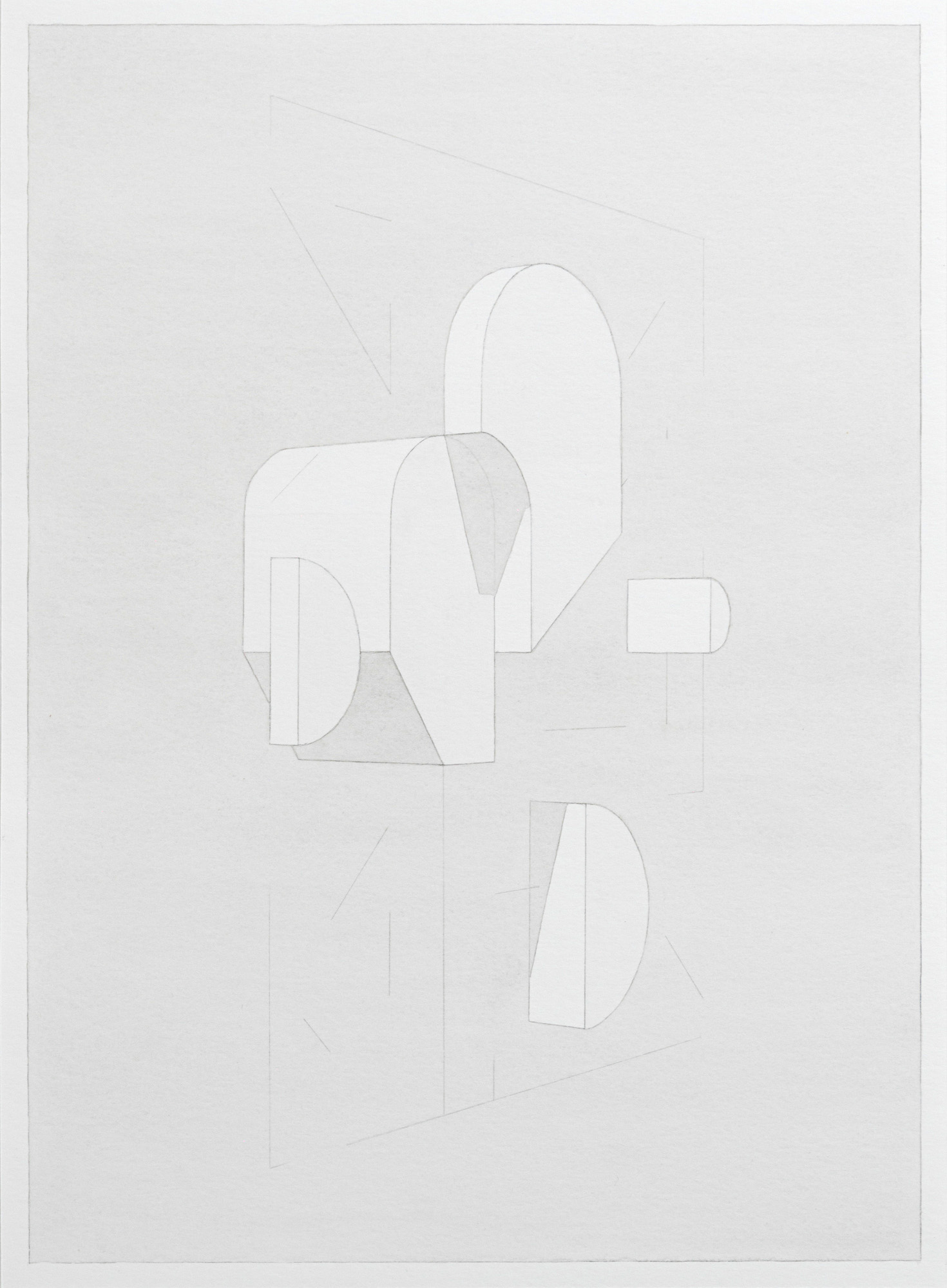
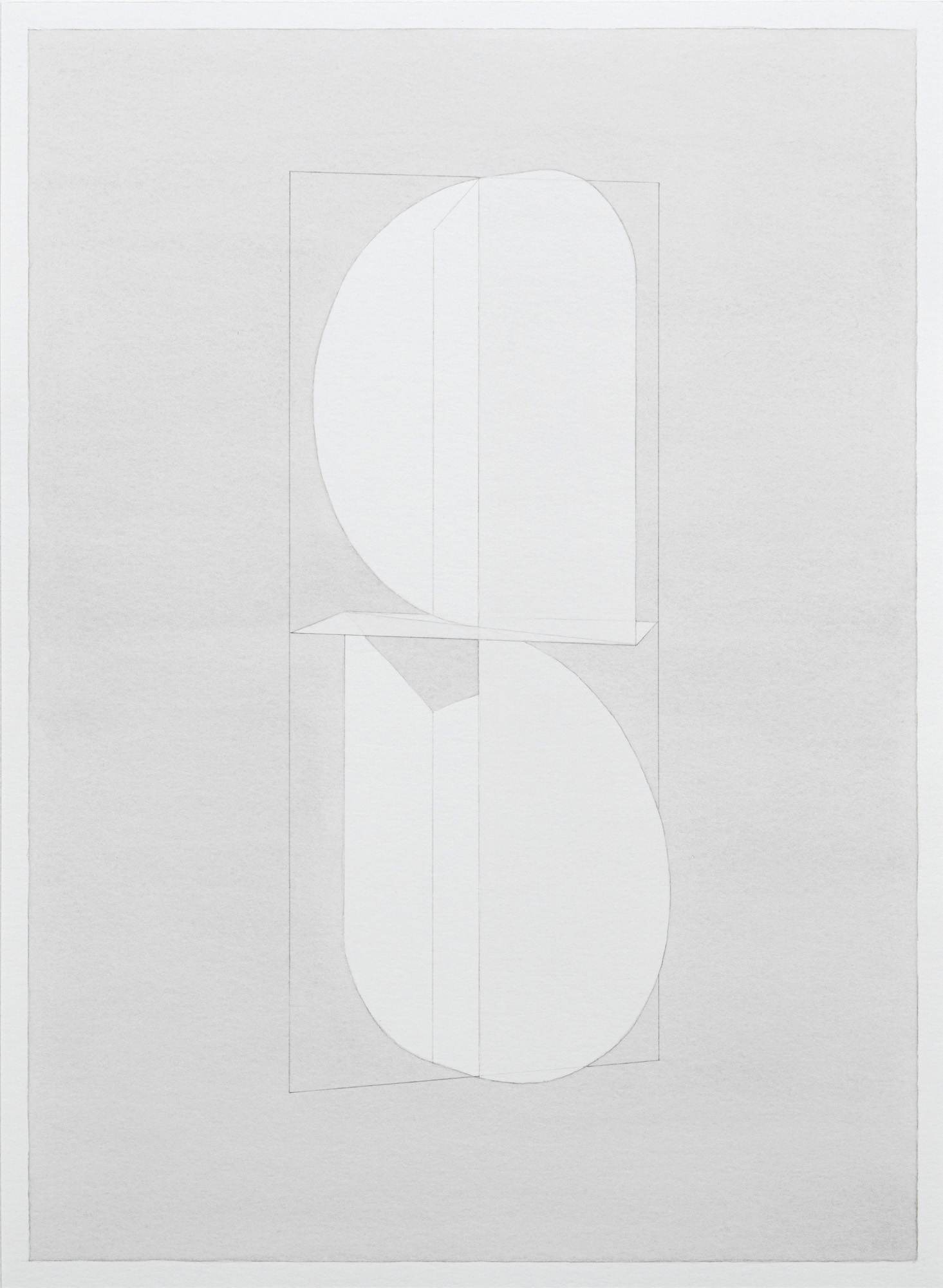

Swipe to see more images
You were born in Mauritania, located in Northwest Africa, and spent most of your childhood in Spain. Did this constant movement between countries with diverse cultures ever make you feel a lack of belonging?
I became accustomed to frequent relocation during my upbringing. Surprisingly, the absence of a strong attachment to any specific place actually provided me with a sense of freedom and comfort. In my earlier years as an artist, I believed that my multicultural background had no bearing on my creative process or the type of work I produced. I resisted connecting the dots between my upbringing and my art, as I felt it might hinder the interpretation of my work. However, in recent times, I've come to recognize a deeper correlation than I initially thought. For instance, many of my site-specific works are created spontaneously on-site and later dismantled once the exhibition concludes. When I look back, these processes mirror the moments and emotions I experienced during my childhood when I had to repeatedly leave behind newly formed friendships and a sense of comfort. The concept of being firmly rooted in one place didn't come naturally to me. While I don't consciously dwell on these memories when I work, I do believe they may have subtly influenced my artistic approach.
You've explored a variety of series that utilize space in different ways, ranging from Room Drawing to Line Sculpture. What are the key considerations that guide you when you embark on an installation in a room?
It might sound a bit abstract (chuckles), but I essentially engage in a dialogue with the space. By approaching a particular space with an open and receptive mindset and spending ample time immersed in it, it's as if I can hear responses to my questions. Maintaining harmony with the space is paramount. The majority of my works are executed with as minimal advance planning as possible.
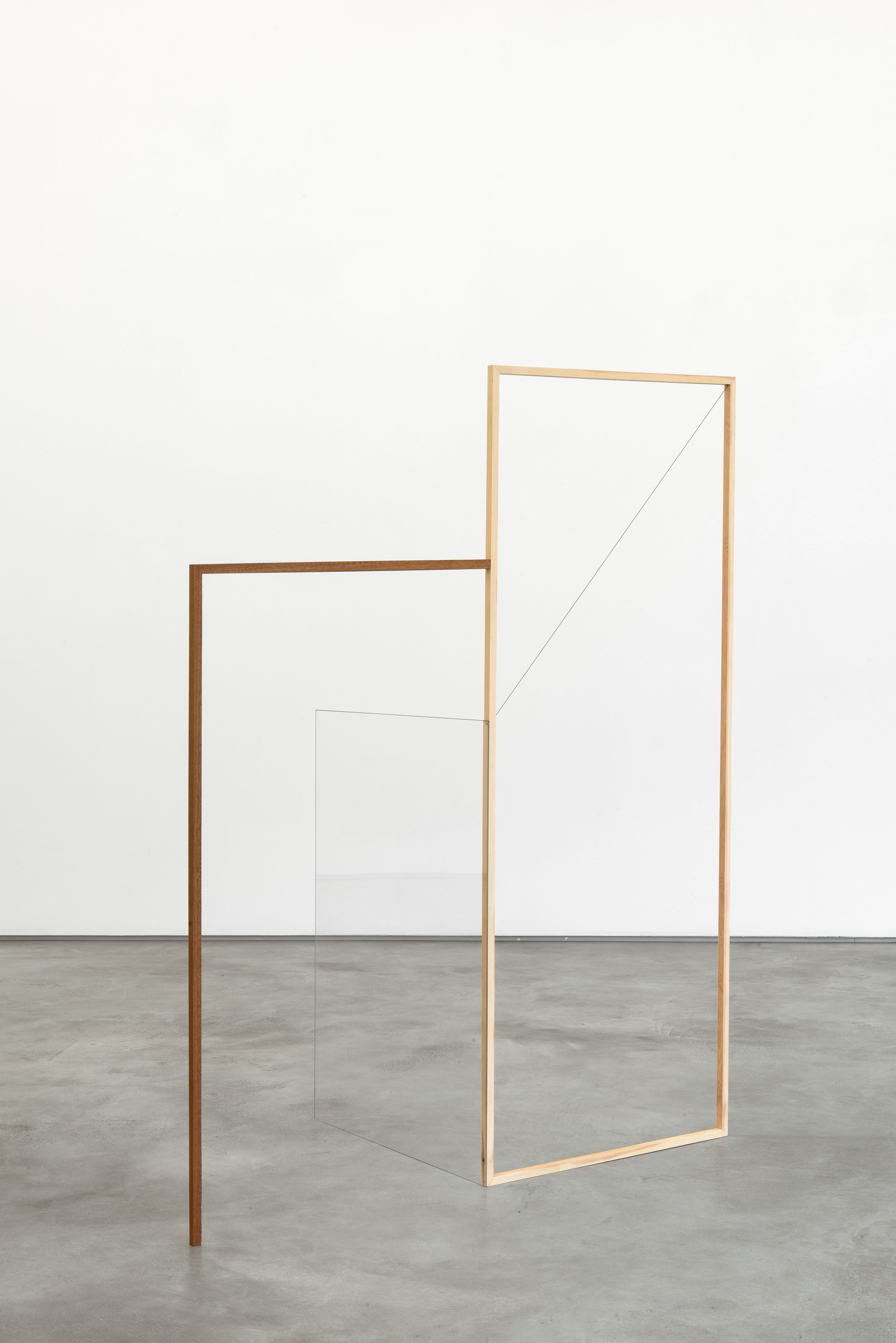
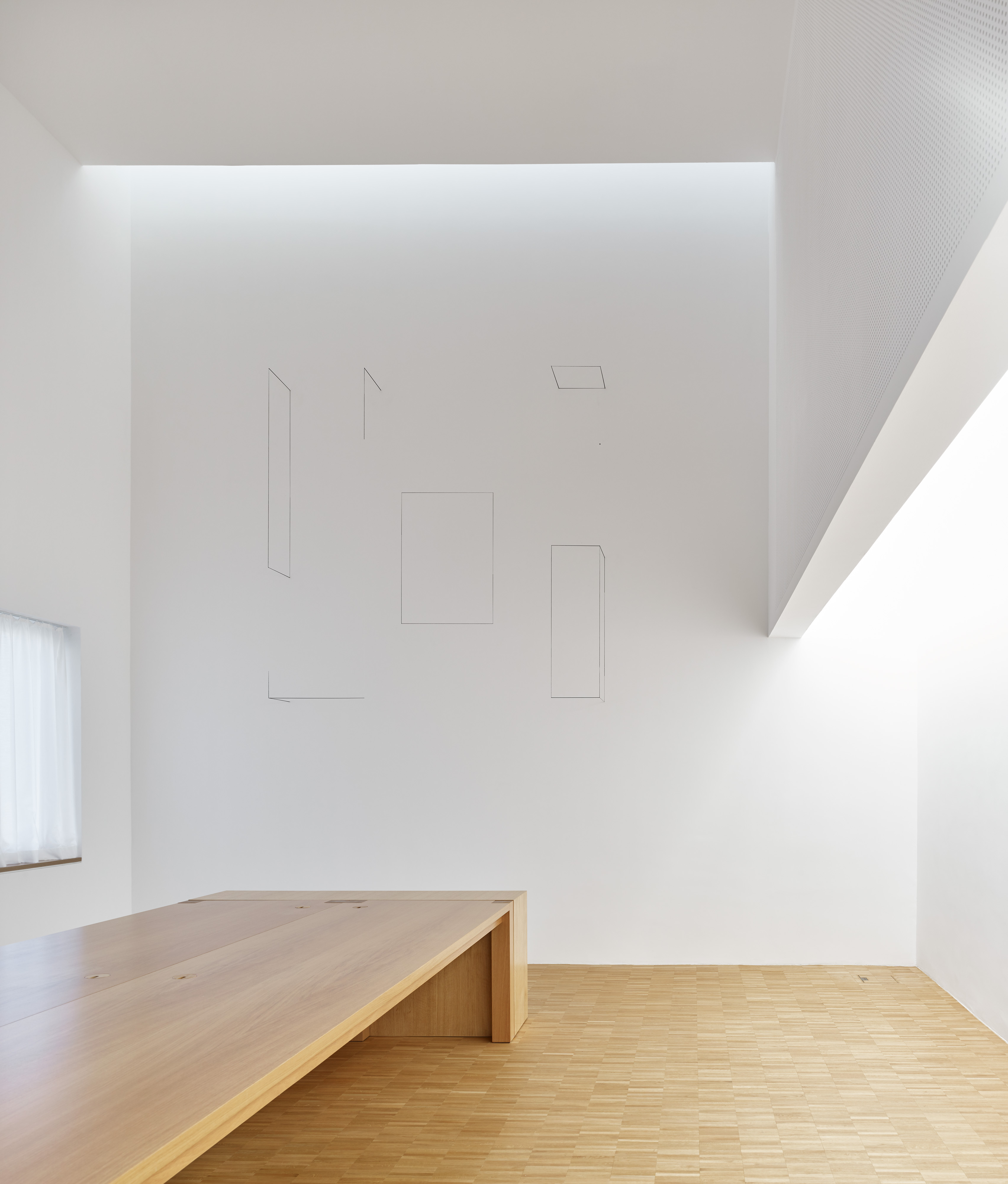
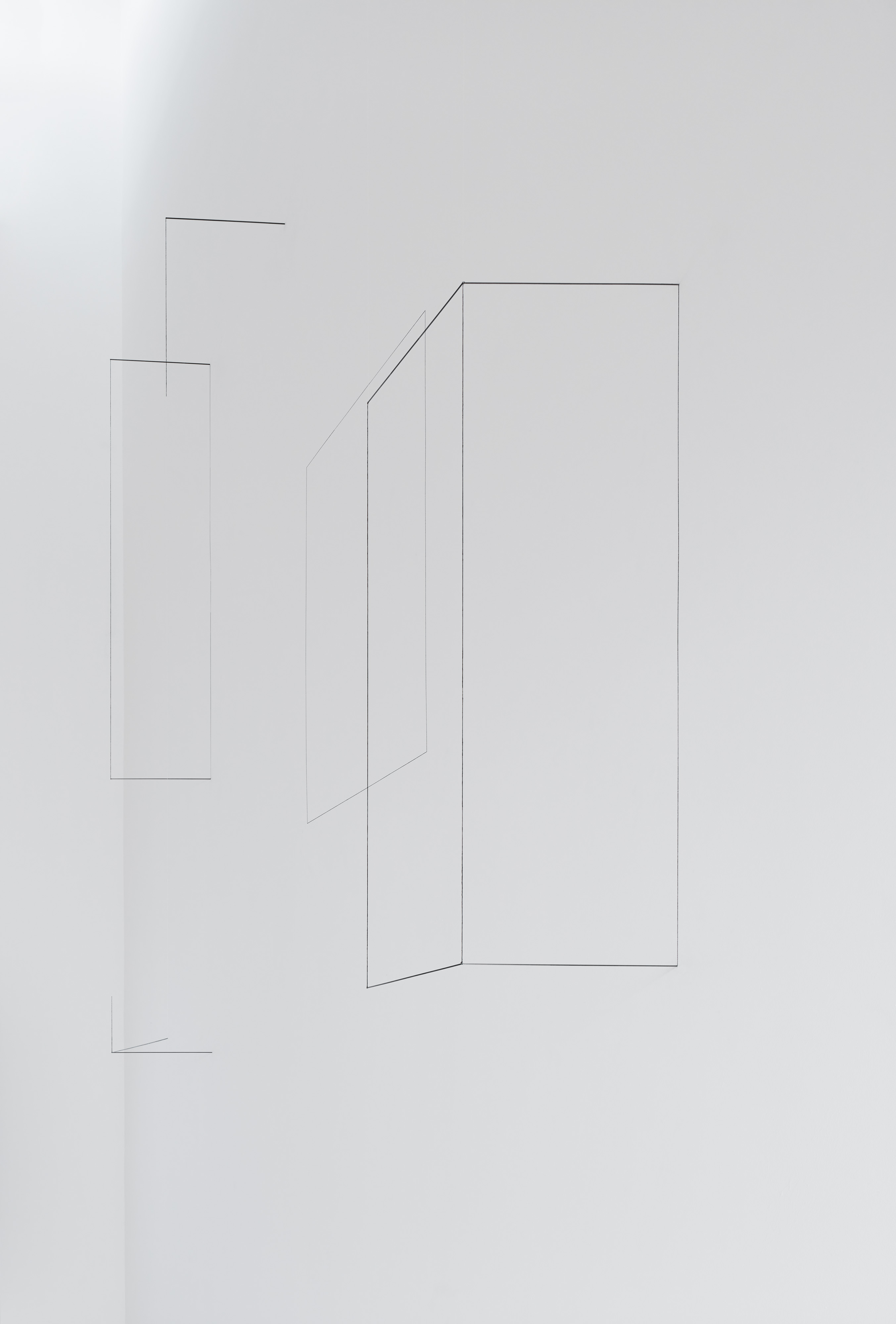

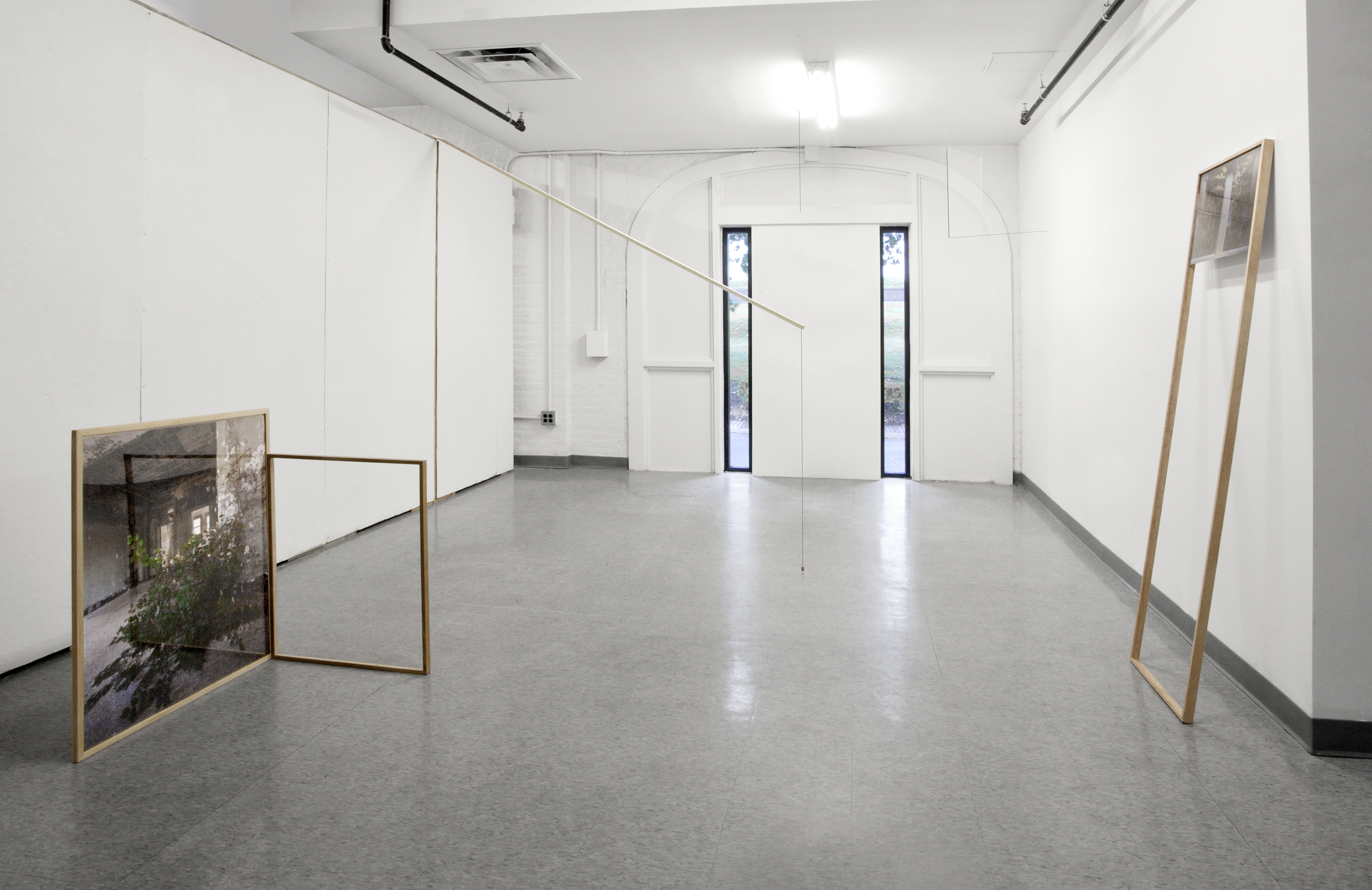
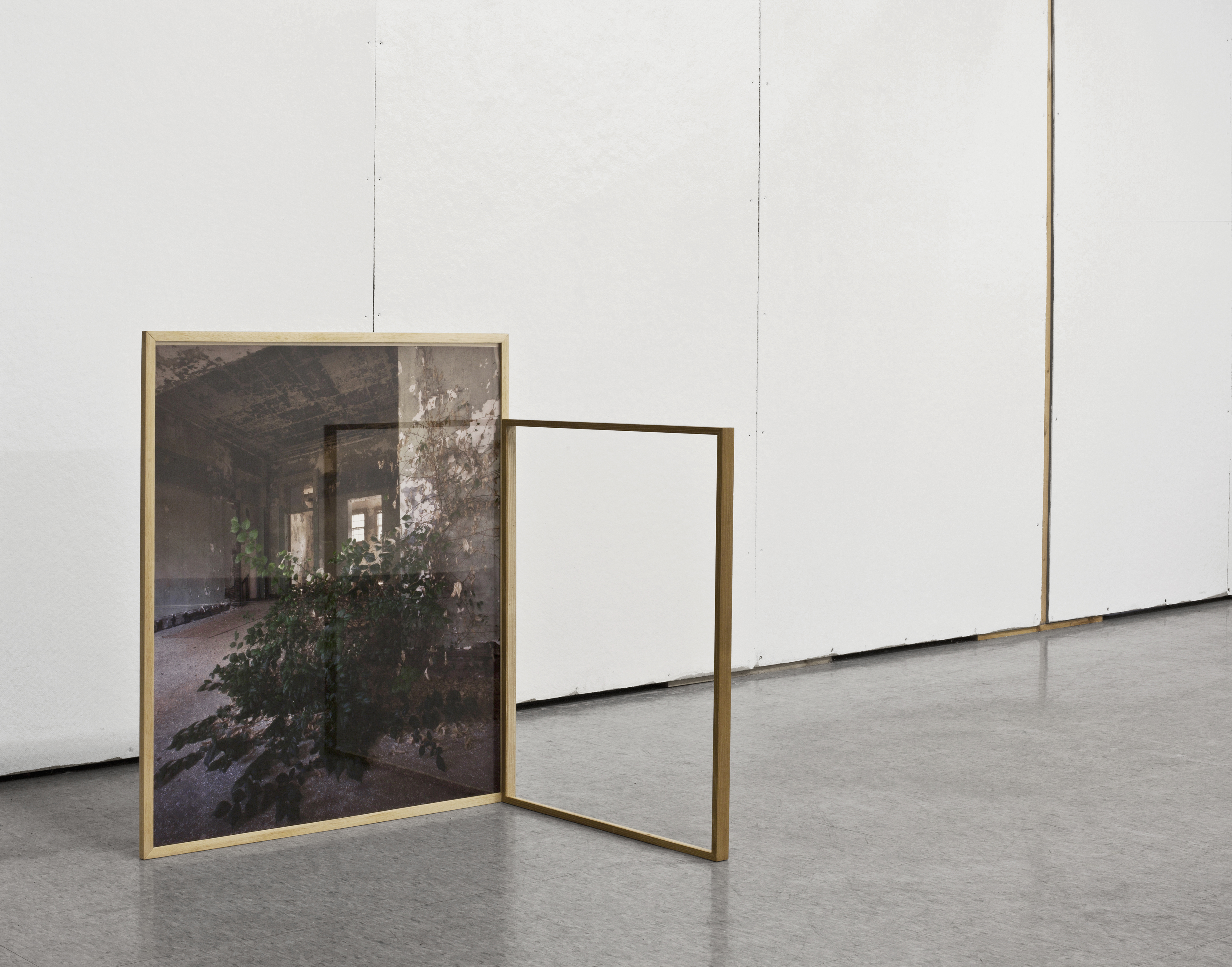
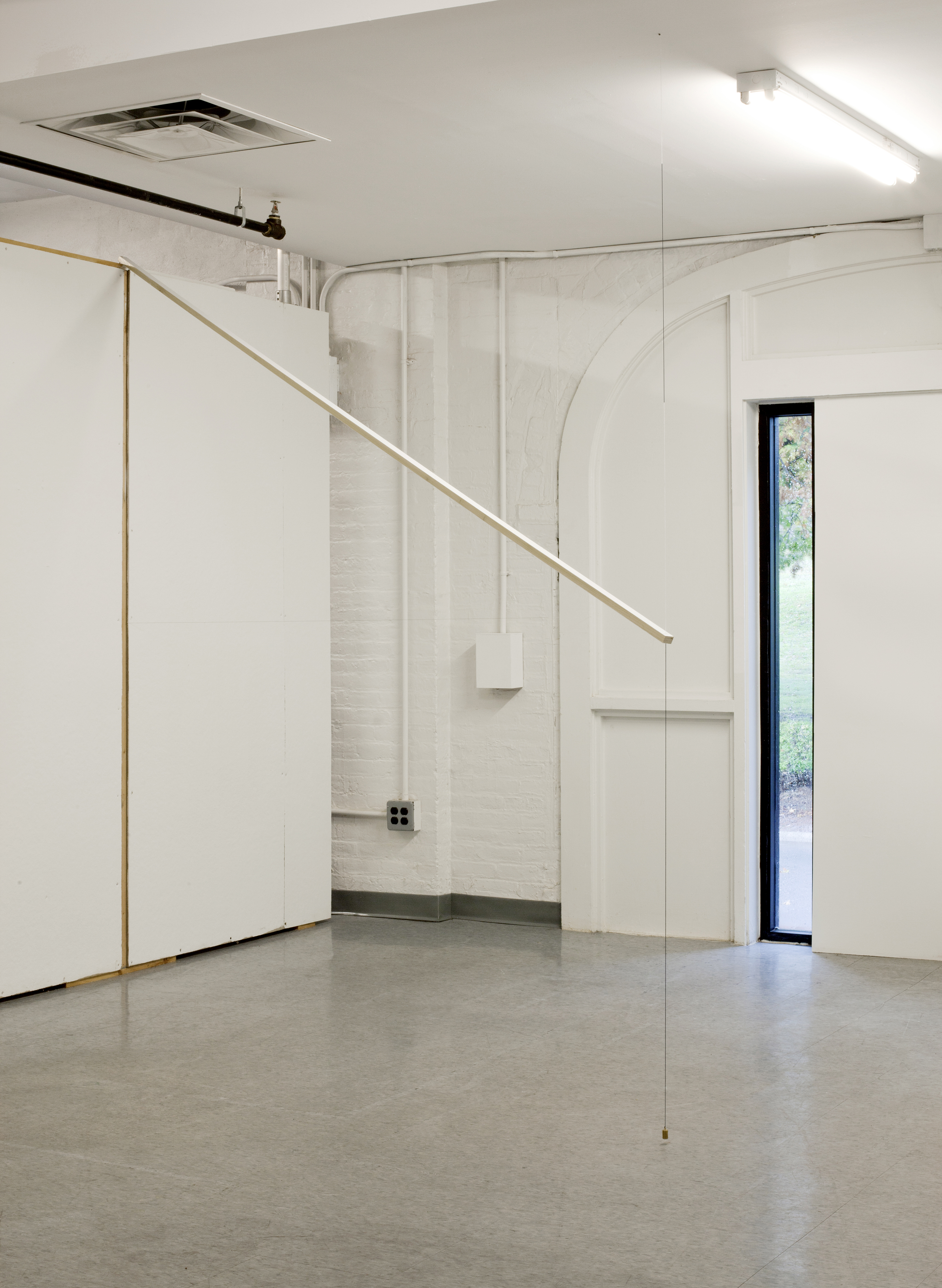
Swipe to see more images
I'm curious to learn more about specific works, especially Room Drawing (Found Objects #1) from 2018. This installation seems to incorporate a larger number of found objects compared to other works in the series. Could you share more about their origins?
This installation was created in Japan in 2018 for an exhibition that was open for only ten days, with just one day allocated for the installation itself. Given the nature of my work, which typically demands more time on-site, I was faced with a dilemma. After giving it a thought, I decided to integrate those ten days of the exhibition into the artwork. Starting from the opening day, I began adding found objects to the installation, objects I had picked up each morning on my way to the gallery. It felt as if I were crafting a narrative over the course of the exhibition. The work evolved and displayed different characteristics each day, and the process itself became an integral part of the artwork, visible to visitors as they saw me working on it. It was a fascinating experience to witness the gradual accumulation of objects I collected daily, each contributing to its own evolving story.
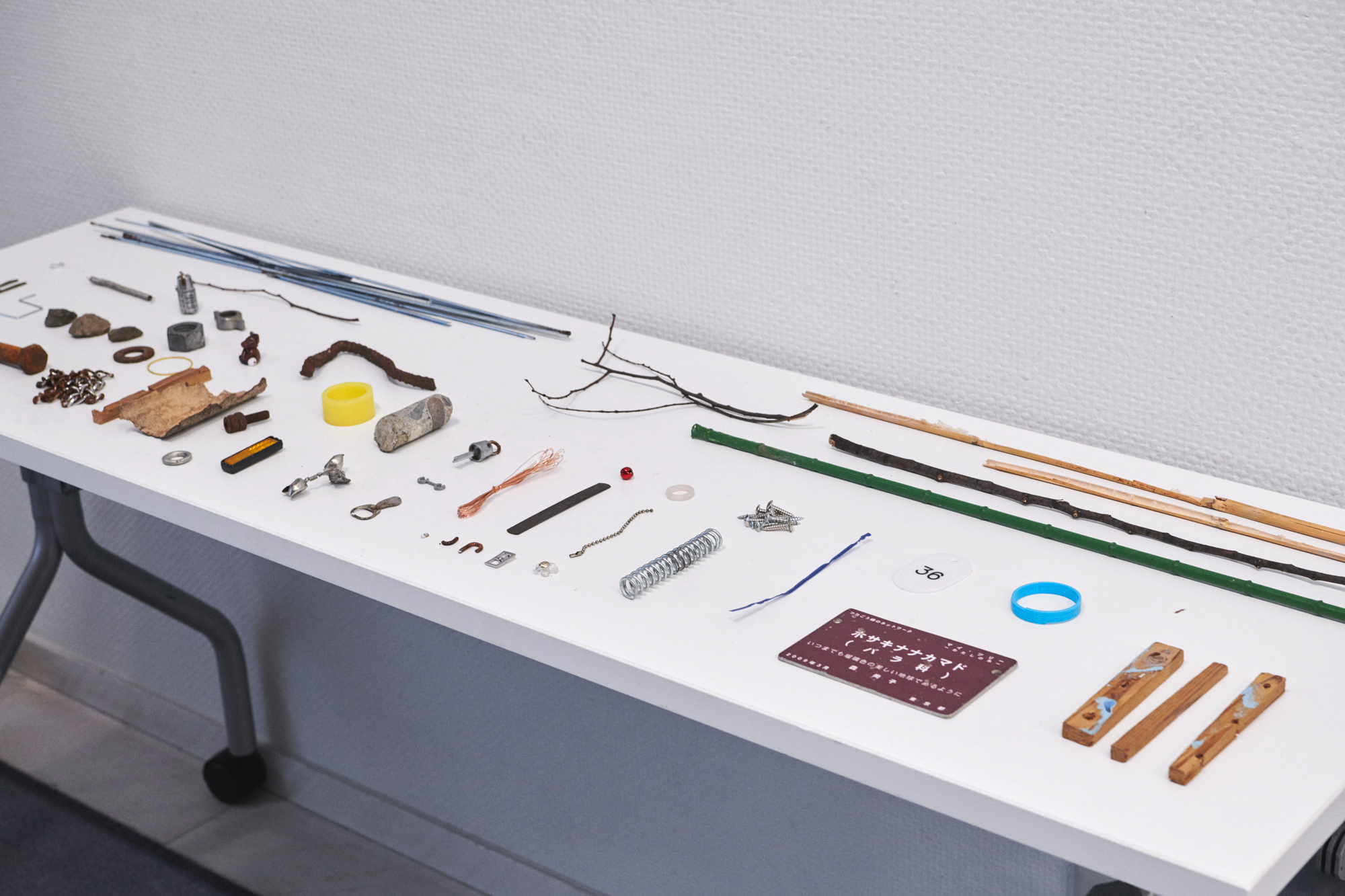
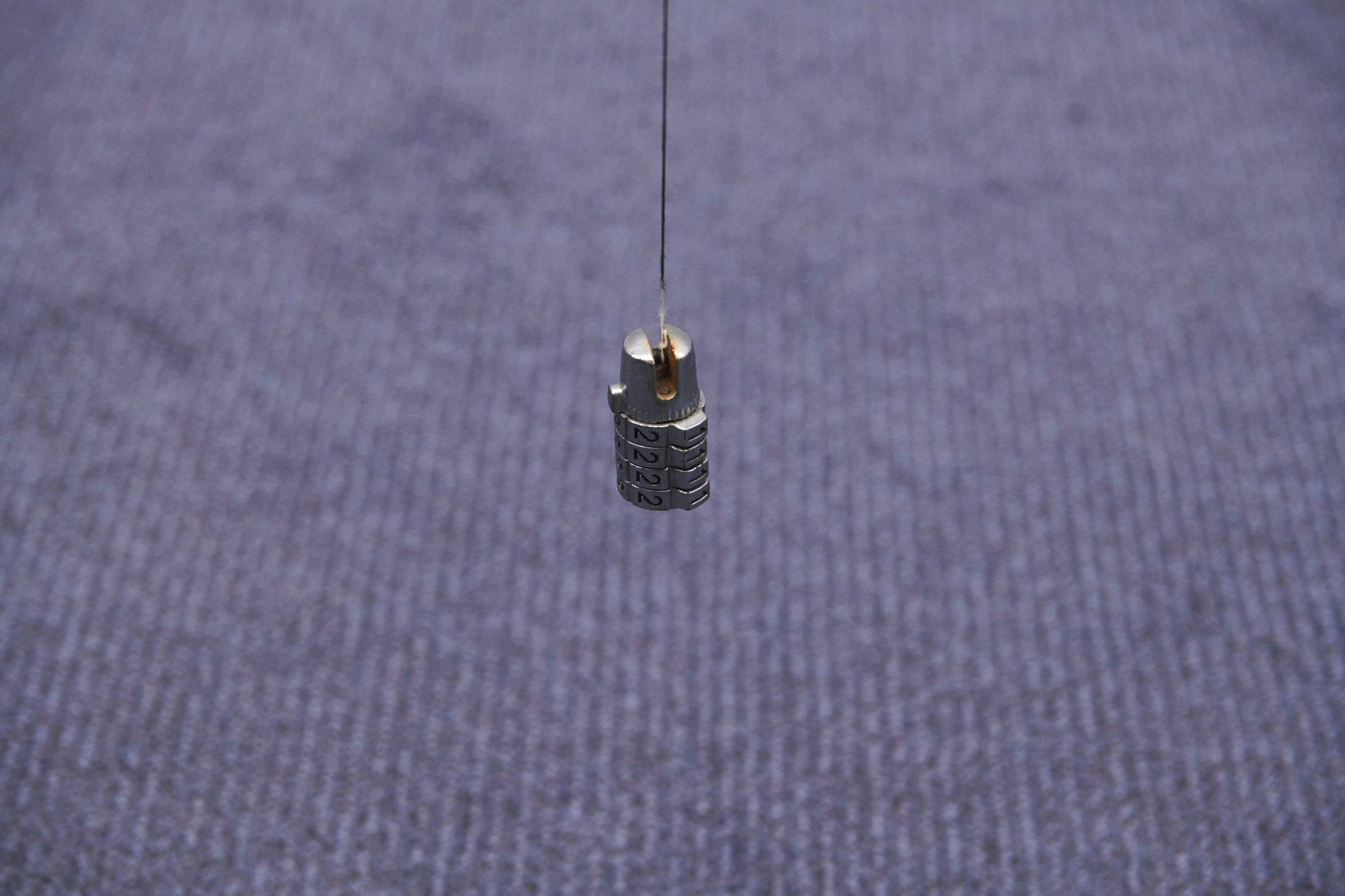

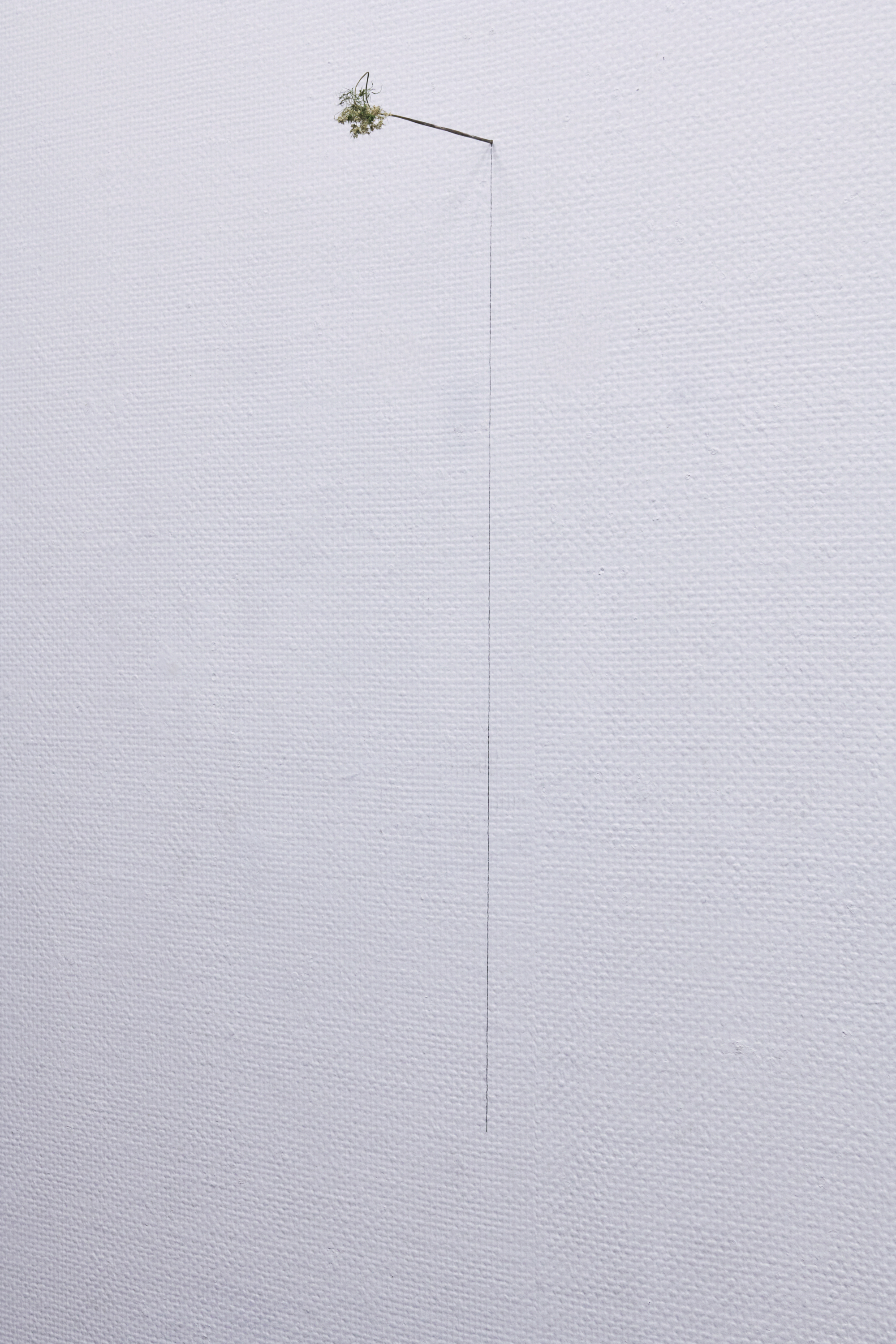
Swipe to see more images
One intriguing aspect of the Found Gestures series is the recurring motif of chairs. Unlike other series that often feature abstract or geometric patterns, the Chair series appears to be one of the few in your body of work inspired by a specific object. Do you find yourself more inclined to explore and utilize various materials and colors, or are you more interested in deriving new outcomes using the same materials?
The Chair series, to begin with, was a project I initiated while I was in Japan. It marked one of the early instances where I started incorporating found objects into my work. On the street I frequently walked during my time in Japan, there was always a substantial heap of discarded chairs. I would salvage some of these chairs almost daily, and that's how they found their way into my process. The bright green paint used in Pyramid—another work included in the series— was initially given to me by a friend during my undergrad, and the same applies to the stones, wood, and makeup brush featured in other works within the series. People I knew would casually provide me with these items, amassing them in front of my studio because they understood my working approach.
I relish the problem-solving aspect of my work, in a sense. I enjoy assessing the materials I have at hand in a given situation, constructing a framework from them, and then discovering what new creations can emerge within those constraints. It's similar to how we navigate our lives with limited freedom. Creating a site-specific work within a designated space, when you think about it, imposes constraints and boundaries that cannot be altered. I derive satisfaction from gradually resolving these challenges on my own, which is fundamentally how I approach my art. Returning to the Chair series, it was a deliberate effort to explore the potential of generating something new from limited options and materials.
This concept of limitation ties into the essence of sculpture as an artistic genre. To me, sculpture represents an unadulterated, honest medium, physically present without any optical illusions. Regardless of the specific material—whether it's wood or stone—there's always the need to grapple with gravity and weight, inherent conditions that demand a unique approach.

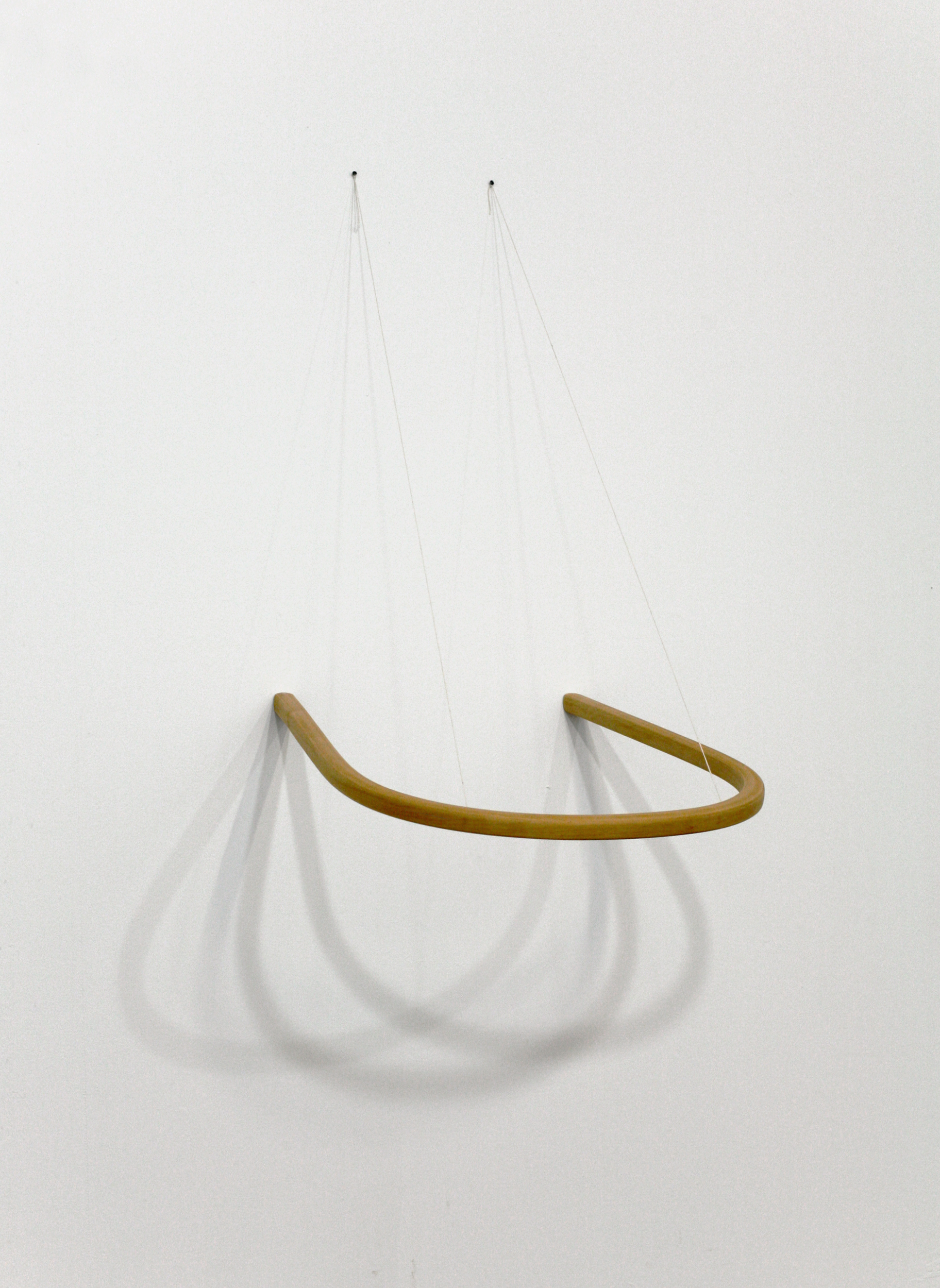
Swipe to see more images
Geometric patterns are a recurring theme in your works. However, these patterns seem to bear the unmistakable mark of the artist's hand, such as the shaping of the grid or the curvature of the wire. Despite the fact that the majority of your work blends geometric forms with found objects, it doesn't convey an artificial or overly literal impression often associated with minimalist sculptures. To me, it possesses a more poetic quality.
That is correct; I do make a deliberate effort to leave my work with a hint of a personal touch. While working with geometric shapes can sometimes result in a sense of cold, calculated precision, I have long aspired to imbue geometric art with warmth. For instance, even when I have the option to use black string, I intentionally begin with white thread and apply charcoal or dark paint to the surface by hand. Although it may be a subtle touch, it's my way of introducing a sense of warmth. I strive to avoid the overly weighty or literal style often associated with minimalism, preferring to maintain a sense of lightness and playfulness in my creative process.
In Treeangle (2012), you took your work out of the traditional white cube gallery and into the public space of nature. I'm curious to learn about the inspiration behind using trees as your primary material and how working in a public setting differs from working within an enclosed space.
I had the opportunity to work on Governors Island, located near Manhattan, just a 15-minute ferry ride away. Back when I was in New York, the island was quite undeveloped, with abandoned houses dotting its landscape. I was part of a residency program that allowed artists to utilize the island for their artistic projects. Treeangle marked my first venture into creating official public art, taking my work beyond the confines of the white cube gallery and into the open embrace of nature.
Much like my approach to working with objects, I was eager to explore the possibilities presented by the natural environment and the presence of trees. I was intrigued by the strength and flexibility of trees, as well as their ability to securely hold strings taut from both ends. Certainly, working in a public space posed more constraints compared to the controlled environment of a gallery such as concerns about the safety of viewers and the potential impact on the natural surroundings.
However, in the end, I found that the creative process itself mirrored my previous work in many ways. It all revolved around making the most of what we had at our disposal, navigating the possibilities, and solving the challenges that arose along the way.
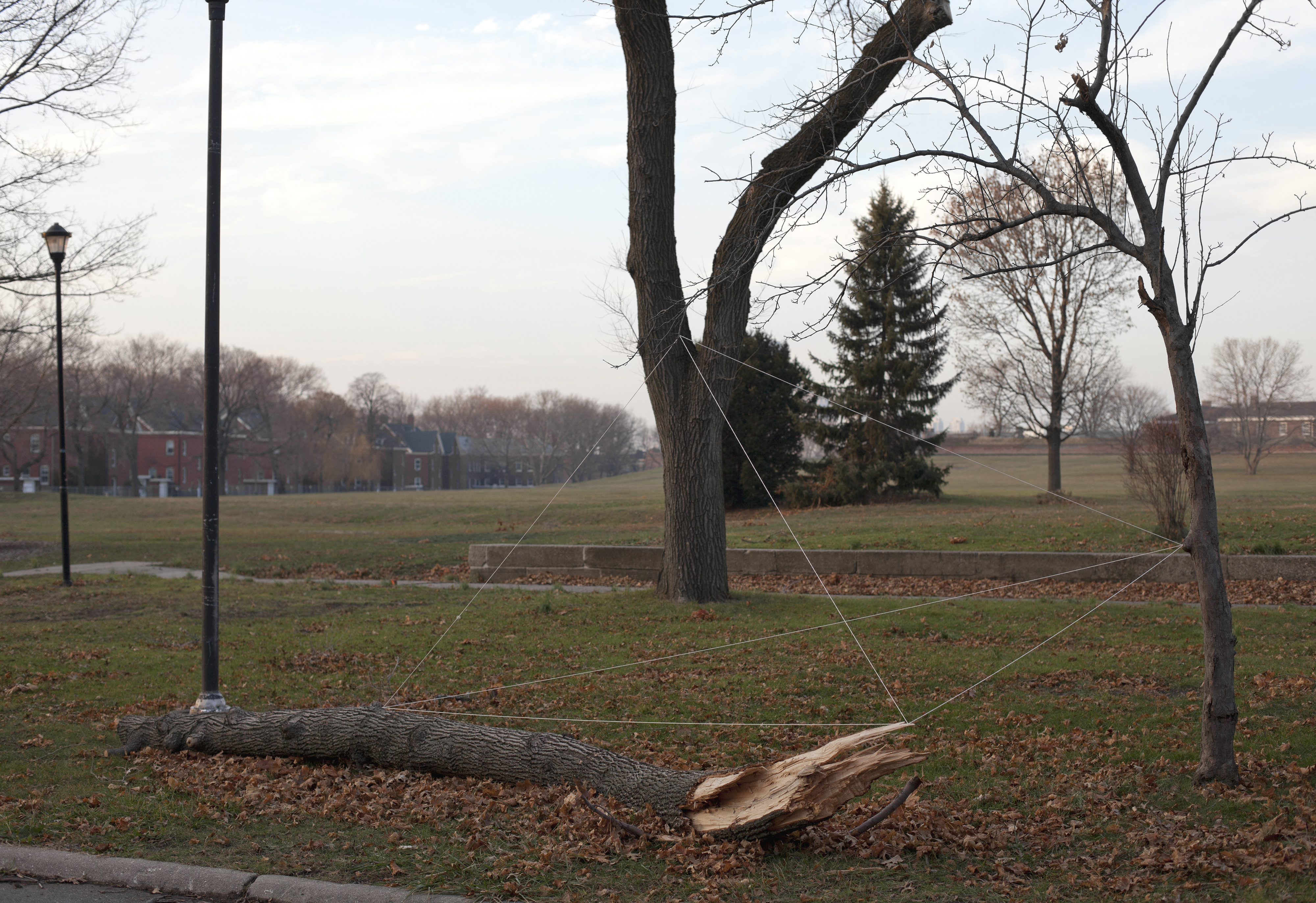

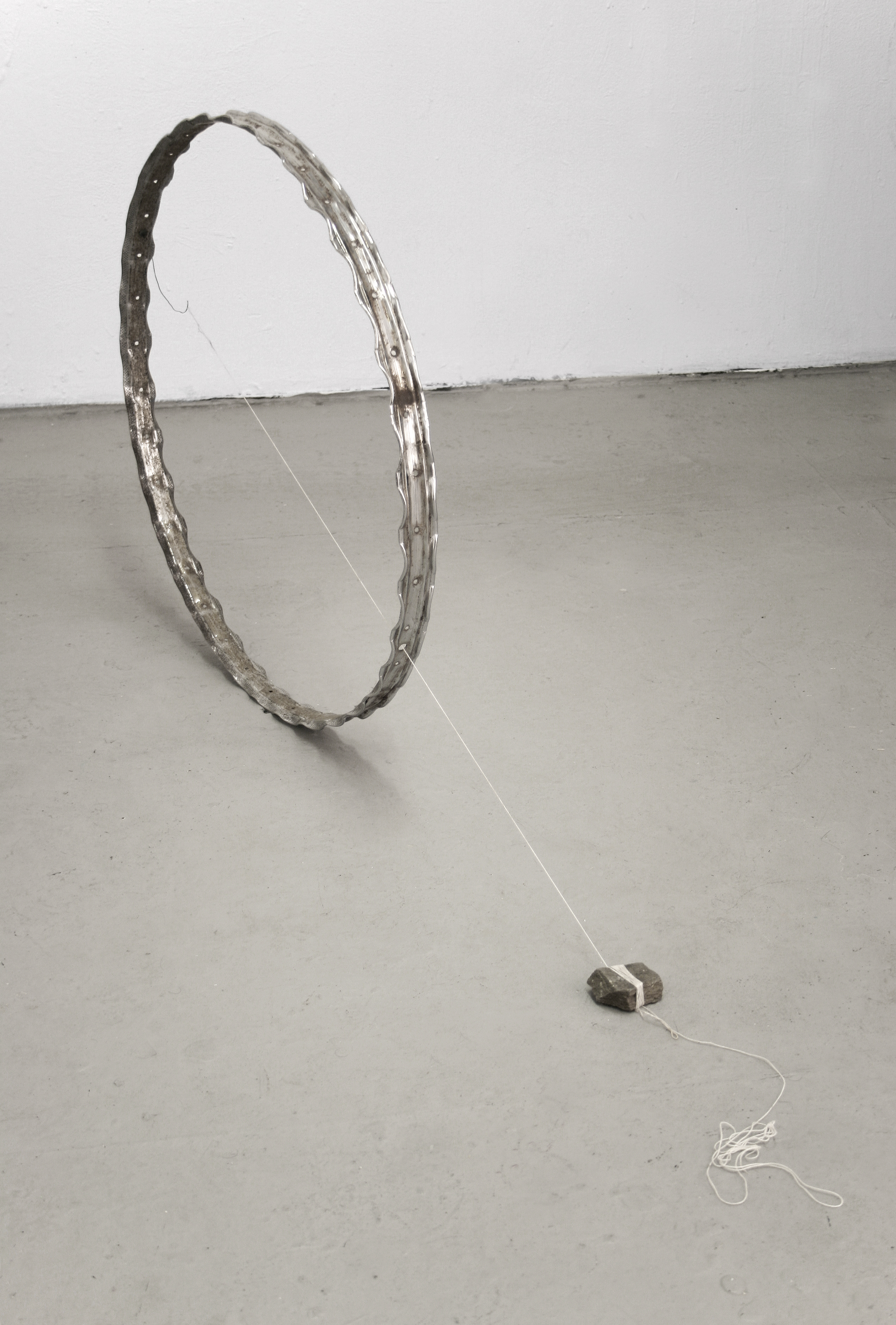
Swipe to see more images
Could you provide a brief overview of your new group show, off-site, which is set to open at Art Sonje Center in Seoul?
off-site is a group exhibition that explores unconventional museum spaces beyond the main exhibition hall, utilizing areas like stairways, backstage, rooftops, and operational rooms. My work involves creating artwork along the stairways, spanning from the base floor to the ground floor. This space possesses a unique atmosphere, with various pre-existing structures and a glass wall allowing direct views of the outdoor surroundings. Given these characteristics, I aimed to create an installation involving light, similar to my approach in A Place Between Rhythm and Rhythm, fostering an organic interplay between the interior and the exterior. Depending on one's perspective and entry point, the artwork can either merge with or diffuse into the outdoor scenery reflected through the window.
off-site is on view through Oct 8, 2023, at Art Sonje Center, Seoul. You can check out more information on: https://artsonje.org/en/exhibition/off-site/
© 2023 Radar